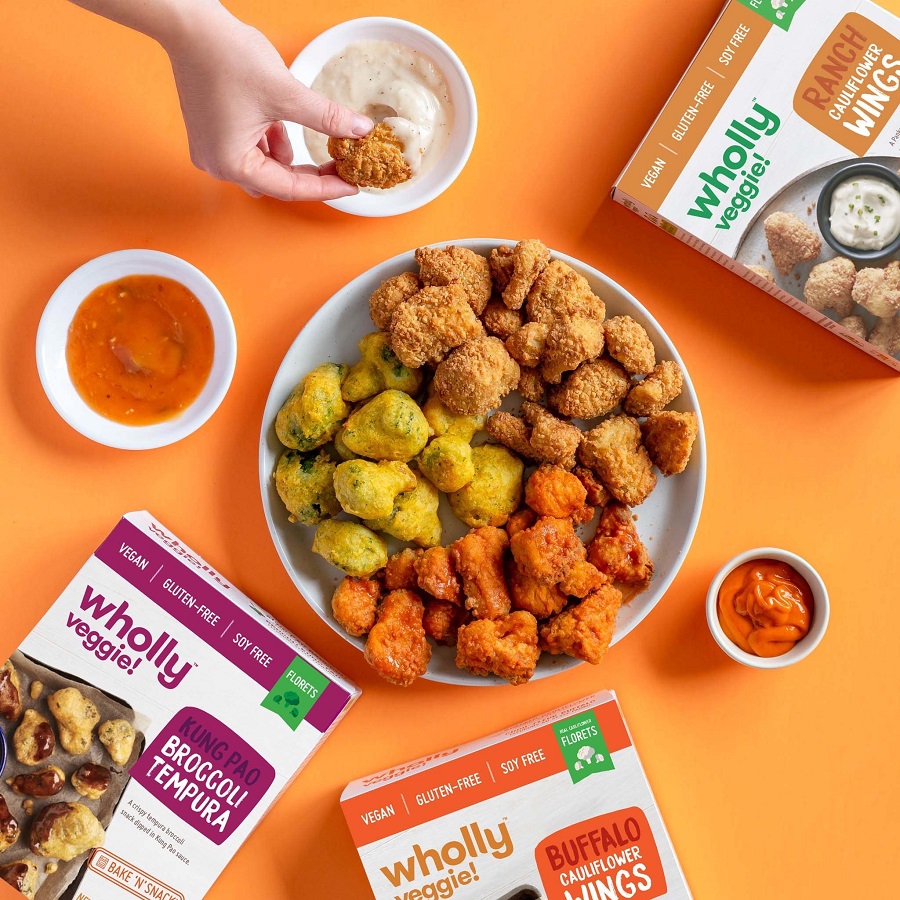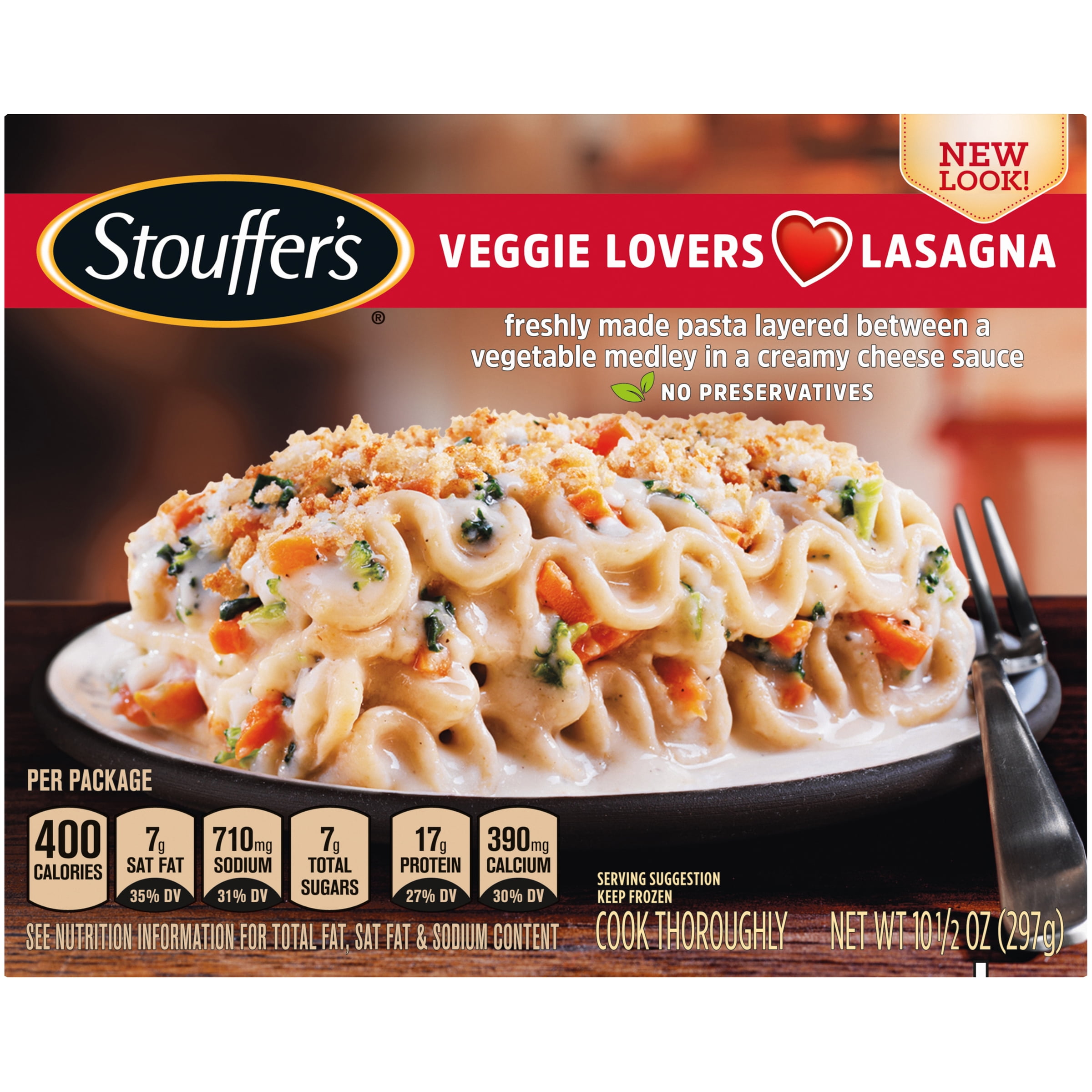Vegetarian frozen food has emerged as a popular and convenient option for individuals seeking plant-based meals. With the growing demand for healthier and sustainable food choices, this article delves into the world of vegetarian frozen food, exploring market trends, product categories, consumer preferences, and more.
From market overview and product categories to consumer trends and environmental impact, this guide provides a comprehensive understanding of the vegetarian frozen food industry. Whether you’re a health-conscious consumer or a food industry professional, this article aims to inform and engage you with valuable insights.
Market Overview
The vegetarian frozen food market is experiencing significant growth, driven by increasing consumer demand for plant-based alternatives. According to a recent study, the global vegetarian frozen food market was valued at USD 15.6 billion in 2021 and is projected to reach USD 29.4 billion by 2028, exhibiting a CAGR of 9.5% during the forecast period.
Key market trends include the rising popularity of flexitarian and vegan diets, growing awareness of the environmental impact of meat production, and advancements in plant-based meat substitutes.
Major Market Players
Major players in the vegetarian frozen food market include:
- Nestlé
- Amy’s Kitchen
- Tofutti Brands
- Quorn Foods
- MorningStar Farms
These companies hold a significant market share and are continuously innovating to meet the evolving needs of consumers.
Product Categories
Vegetarian frozen foods come in a wide range of categories, each offering a variety of options to cater to different dietary preferences and culinary needs.
The following table provides an overview of the main categories of vegetarian frozen foods, along with examples of products and their key features:
| Category | Examples | Key Features |
|---|---|---|
| Entrees | Vegetable stir-fries, pasta dishes, pizzas, burritos | Complete meals that can be heated and served |
| Sides | Vegetable medley, mashed potatoes, corn on the cob | Accompaniments to main dishes |
| Appetizers | Vegetable spring rolls, veggie nuggets, onion rings | Small bites served before a meal |
| Desserts | Fruit sorbets, vegan ice cream, frozen yogurt | Sweet treats that can satisfy cravings |
Consumer Trends
The demand for vegetarian frozen food has surged in recent years, driven by several key factors. Changing dietary preferences, rising health consciousness, and growing environmental concerns have contributed to this trend.
Consumers are increasingly opting for plant-based diets, whether for ethical, environmental, or health reasons. Vegetarian frozen food offers a convenient and affordable option for those looking to reduce their meat consumption or transition to a fully vegetarian lifestyle.
Key Consumer Segments
The vegetarian frozen food market caters to a diverse range of consumer segments, each with specific needs and preferences:
- Flexitarians:Individuals who primarily follow a vegetarian diet but occasionally consume meat or fish.
- Vegetarians:Individuals who abstain from consuming all types of meat, including poultry and fish.
- Vegans:Individuals who avoid all animal products, including meat, dairy, eggs, and honey.
- Health-conscious consumers:Individuals who prioritize healthy eating habits and seek vegetarian frozen food options that are low in saturated fat, cholesterol, and sodium.
- Convenience-seekers:Consumers who value convenience and seek quick and easy vegetarian meal solutions.
Production and Innovation

The production of vegetarian frozen food involves several key steps, including ingredient sourcing, processing, freezing, and packaging. Ingredient sourcing is crucial to ensure the quality and freshness of the final product. Once the ingredients are sourced, they undergo various processing techniques, such as cutting, mixing, and cooking.
These techniques help shape the texture, flavor, and nutritional value of the frozen food.
Technological advancements and innovations play a vital role in the vegetarian frozen food industry. Automation and advanced machinery have streamlined production processes, increasing efficiency and reducing costs. Research and development efforts are focused on developing new and innovative products that meet the evolving demands of consumers.
These efforts include exploring plant-based ingredients, enhancing nutritional profiles, and creating convenient and flavorful options.
Ingredient Sourcing
- Sourcing high-quality ingredients from reliable suppliers is essential to ensure the quality and freshness of the final product.
- Vegetarian frozen food manufacturers work closely with farmers and distributors to procure fresh vegetables, fruits, grains, and other plant-based ingredients.
- Stringent quality control measures are implemented throughout the supply chain to maintain the integrity and safety of the ingredients.
Processing Techniques
- Once the ingredients are sourced, they undergo various processing techniques to create the desired texture, flavor, and nutritional value.
- These techniques may include cutting, mixing, cooking, and blending.
- Advanced machinery and automated processes are used to ensure consistency and efficiency in production.
Freezing and Packaging
- After processing, the vegetarian frozen food is subjected to rapid freezing techniques to preserve its freshness and nutritional value.
- Freezing inhibits the growth of microorganisms and slows down enzymatic reactions, extending the shelf life of the product.
- The frozen food is then packaged in airtight containers to prevent freezer burn and maintain its quality during storage and transportation.
Research and Development
- Research and development (R&D) plays a crucial role in the vegetarian frozen food industry.
- Manufacturers invest in R&D to develop new and innovative products that meet the evolving demands of consumers.
- R&D efforts focus on exploring plant-based ingredients, enhancing nutritional profiles, and creating convenient and flavorful options.
Packaging and Labeling
Packaging and labeling play a crucial role in the marketing and consumer perception of vegetarian frozen food. Effective packaging protects the product’s integrity, while clear labeling provides essential information to consumers.
Types of Packaging
- Flexible Packaging:Pouches, bags, and films made from plastic or aluminum, offering flexibility and cost-effectiveness.
- Rigid Packaging:Containers, boxes, and trays made from plastic, cardboard, or metal, providing protection and durability.
- Aseptic Packaging:Sterile containers that extend shelf life without refrigeration, ensuring product freshness.
Importance of Labeling
Labeling provides vital information to consumers, including:
- Product Name and Description:Clearly identifies the product and its ingredients.
- Nutritional Information:Lists calories, nutrients, and dietary information.
- Allergen Warnings:Alerts consumers to potential allergens.
- Storage and Handling Instructions:Guides consumers on proper storage and preparation.
- Brand and Manufacturer Information:Identifies the company responsible for the product.
Innovative Packaging Designs, Vegetarian frozen food
Innovative packaging designs enhance consumer convenience and product appeal:
- Resealable Packaging:Allows for easy access and portion control.
- Microwavable Packaging:Enables quick and convenient meal preparation.
- Eco-Friendly Packaging:Uses sustainable materials to reduce environmental impact.
Distribution and Retail: Vegetarian Frozen Food

The distribution channels for vegetarian frozen food are diverse, encompassing a range of retail outlets and online platforms.
Role of Online Retailers
Online retailers have emerged as significant players in the distribution of vegetarian frozen food, offering convenience and a wide selection of products to consumers. E-commerce platforms like Amazon and specialized online grocers provide nationwide reach and allow consumers to purchase products from the comfort of their homes.
Role of Grocery Stores
Grocery stores remain a crucial channel for the distribution of vegetarian frozen food, particularly in the frozen food aisle. Supermarkets, hypermarkets, and specialty grocery stores stock a variety of vegetarian frozen food products, catering to the needs of consumers with different dietary preferences.
Consumer Shopping Behavior
Consumer shopping behavior for vegetarian frozen food is influenced by factors such as convenience, availability, and price. Consumers are increasingly seeking out convenient and time-saving meal options, making frozen food an attractive choice. The availability of vegetarian frozen food in a variety of retail outlets, both online and offline, has made it more accessible to consumers.
Health and Nutrition

Vegetarian frozen food offers a range of essential nutrients that support overall health and well-being. These products are typically rich in fiber, vitamins, minerals, and antioxidants, which play crucial roles in maintaining a balanced diet.
Consuming frozen vegetarian products can provide several health benefits, including improved digestion, reduced risk of chronic diseases, and weight management. However, it’s important to consider potential drawbacks such as higher sodium content and limited variety compared to fresh produce.
Nutritional Value
- Fiber:Vegetarian frozen food is an excellent source of dietary fiber, which aids digestion, promotes satiety, and helps regulate blood sugar levels.
- Vitamins:Frozen vegetables are rich in vitamins A, C, and K, which are essential for immune function, eye health, and blood clotting, respectively.
- Minerals:Vegetarian frozen food provides essential minerals such as iron, calcium, and potassium, which support bone health, blood production, and nerve function.
- Antioxidants:Frozen fruits and vegetables contain antioxidants like vitamin C, beta-carotene, and lycopene, which protect cells from damage caused by free radicals.
Benefits of Consumption
- Improved Digestion:The high fiber content in vegetarian frozen food promotes regular bowel movements and maintains a healthy digestive system.
- Reduced Risk of Chronic Diseases:The antioxidants and nutrients in frozen vegetarian products have been linked to a reduced risk of chronic diseases such as heart disease, cancer, and diabetes.
- Weight Management:Vegetarian frozen food is typically low in calories and fat, making it a suitable choice for weight management.
Potential Drawbacks
- Higher Sodium Content:Some frozen vegetarian products may contain higher levels of sodium, which can be a concern for individuals with hypertension.
- Limited Variety:Frozen vegetarian food options may be limited compared to fresh produce, which can restrict dietary choices.
Guidelines for Healthy Meal Planning
To ensure a healthy and balanced diet, consider the following guidelines when incorporating vegetarian frozen food into your meals:
- Variety:Choose a variety of frozen fruits, vegetables, and plant-based proteins to ensure a wide range of nutrients.
- Sodium Control:Check the sodium content of frozen products and opt for low-sodium options when possible.
- Portion Control:Pay attention to serving sizes to avoid overconsumption.
- Complement with Fresh Produce:While frozen vegetarian food is convenient, it’s still recommended to incorporate fresh fruits and vegetables into your diet for optimal nutrient intake.
Environmental Impact
The production and consumption of vegetarian frozen food have environmental implications that warrant consideration. While plant-based diets generally have a lower environmental footprint compared to animal-based diets, the processing and packaging of frozen foods can introduce additional environmental concerns.
The carbon footprint of vegetarian frozen food varies depending on factors such as the ingredients used, production processes, and transportation. However, studies have shown that it is generally lower than that of animal-based food products. For example, a study by the University of Oxford found that the carbon footprint of a vegetarian frozen meal is approximately 50% lower than that of a comparable meat-based meal.
Sustainable Practices and Packaging Solutions
To mitigate the environmental impact of vegetarian frozen food, manufacturers can adopt sustainable practices throughout the production process. This includes using renewable energy sources, reducing waste, and implementing efficient water management systems.
Additionally, sustainable packaging solutions can play a significant role in reducing the environmental footprint of frozen foods. Biodegradable or recyclable packaging materials can help minimize waste and promote a circular economy. For example, some manufacturers are exploring the use of plant-based or compostable packaging materials to reduce their environmental impact.
Essential Questionnaire
What are the benefits of consuming vegetarian frozen food?
Vegetarian frozen food offers numerous benefits, including convenience, affordability, and nutritional value. It provides a quick and easy way to incorporate plant-based meals into your diet, saving time and effort in meal preparation.
Are there any drawbacks to consuming vegetarian frozen food?
While vegetarian frozen food can be a convenient option, it’s important to consider potential drawbacks. Some products may contain high levels of sodium or preservatives, so it’s crucial to read nutrition labels carefully and opt for healthier choices.
